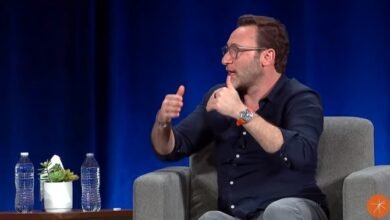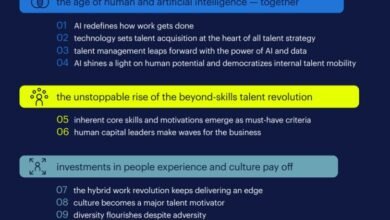Personalization as the Leadership and HR Takeaway from the 2020–2021 Crises

By | Dave Ulrich | Speaker, Author, Professor, Thought Partner on HR, Leadership, and Organization
What is your primary takeaway from the crises (plural: global pandemic, social injustice, political quarrels, economic variability) of the last twelve months?
After the September 11 attacks of 2001 in the United States, improving relationships was a priority and Americana keepsakes were popular; but over time, relationship challenges returned and American hoopla declined. After the 2008–2009 global financial/economic crisis, individual, corporate, and government debt declined, but now debt is as high as ever.
So what do you think (or hope) will be the intended and lasting legacy of the 2020–2021 people/organization crises—one that won’t just fade?
I have heard many thoughtful answers: advancing the digital revolution, redefining work boundaries to include virtual work, increasing social citizenship with an emphasis on diversity, harnessing uncertainty through agility, renewing relationships with family and friends, managing emotional resilience, or “fill in the blank.”
For me, I hope the lasting legacy is personalization.
Personalization Focuses on the Person
First, personalization is about the person. We can think of each person’s personalization in different facets: emotion, empathy, engagement, experience, and efficacy. These e words tend to show up with increased attention on affinity in relationships and in organizations.
When last year’s physical challenges came (and everyone has likely known someone who has physically suffered in this pandemic), the emotional needs of the afflicted and those associated with them mattered as much as physical needs. Organizations can or should become communities where employees find resources that provide personal emotional support.
Empathic leadership will hopefully be the new norm as leaders more fully listen to and hear their employees. With empathy, respecting differences is less an event (e.g., proclaim commitment to diversity) and more an ongoing habit.
Like others in the last year, I have engaged with family and friends through technology in more meaningful ways. I have been able to learn more about others when they share mementos from their personal space. Technology encourages social distancing but not necessarily isolation.
Employee experience has become a critical element of the work experience as employees believe (find meaning), become (learn and grow), and belong (connect with others). Employee experience is a lead indicator of customer experience and investor confidence.
With the increased turmoil around us, many have had to discover their personal efficacy by defining and redefining what success means. Instead of tracking public activity (e.g., for me that included meetings attended, flights taken, goals accomplished), success has become more about private reflections on values recognized and realized (e.g., caring for and reaching out to others, learning new skills).
Hopefully the personal elements of personalization will remain even as the world reopens.
Personalization Focuses on Personalizing Work
Second, personalization also refers to creating more personalized work responses through customized actions at both an employee and organization level.
At the individual level, as the French phrase à chacun son goût implies, no two people are alike. The 2020–2021 crises reinforce differences: sacrificing work for family, working virtually versus in person, acquiring new digital skills, having divergent political views, coping with the emotional demands differently, and defining success differently.
The diversity movement reminds us that we are all different. As a simple exercise, you are unlikely to find someone in the same room at work wearing the same pair of shoes that you wear. The shoes that you like are not likely worn by others even in your same social network. Much more profound than shoes, individuals differ in their demographics (e.g., race, gender, age, education, lifestyle), professional ambitions (ranging from high to low aspirations), and personal goals (definitions of success).
Personalization at work then means that while different, everyone has something to offer to help the collective organization or community become more than the individual parts. That offering may be a perspective, skill, or experience. Leaders who appreciate diversity and yet establish unity create adaptive, innovative, and agile organizations.
These leaders don’t start by telling others what to do, but they discover what matters to each employee and then help each employee recognize that he or she can meet personal goals by engaging in the collective organizational goal. Employees may differ on what they want (e.g., promotion or positions, higher pay, good teammates and colleagues, flexible work schedule, learning opportunities, or impact on outcomes), but they can share the organization setting to accomplish their personal goals and promote the organizational goals as well.
Leaders often assume that others may want what they want and therefore act the way they would act. However, a leader with the ambition to be promoted, for example, may have to recognize that someone else may want more time off for personal reasons. Instead of this leader assuming others will have his or her ambition, she or he can help others reach their goals (e.g., flexible time) through their unique contribution to the organization.
Personalization at work attends to the personal uniqueness of each individual.
At the organization level, personalization moves attention from benchmarking (where leaders compare their organization to others) and best practices (where a leader tries to learn from and mimic others) to guidance (where leaders focus on what matters most to their organization).
Comparing an organization’s human capital (or other) investments with another’s is no longer enough; leaders need to define their organization’s unique (and personalized) human capital requirements based on the desired outcomes. An organization working to reinvent its strategy from product to service or to a more digital platform may have different human capital requirements than an organization working to gain market value or customer share.
The work we have done through our Organization Guidance System (OGS) helps leaders personalize and tailor their human capital investments. By starting with clarity about the results an organization seeks, leaders can then identify which human capital investments will accomplish those results. We have helped organizations assess which of five outcomes they want to achieve (columns in the figure below) and which of 37 human capital initiatives (in talent, leadership, organization, and HR—rows in the figure) they should focus on to make the outcomes happen. A summary of our overall findings with over one thousand organizations is in this figure, with the green cells being those with the most impact on the five results (columns). In another post, I will discuss the implications of these findings. Simply stated here, personalization helps organizations know where to focus investments to deliver key outcomes.
Conclusion
As we eventually emerge from the crises, we may welcome much that returns to normal. But we have learned so much that we would benefit from keeping. Will personalization as both personal affinity and personalized approach at work endure post 2020–2021? I don’t know for sure, but I would hope so.
What are your thoughts about either the agenda you hope endures from the 2020–2021 crises or the personalization agenda I have proposed?
Republished with permission and originally published at Dave Ulrich’s LinkedIn







